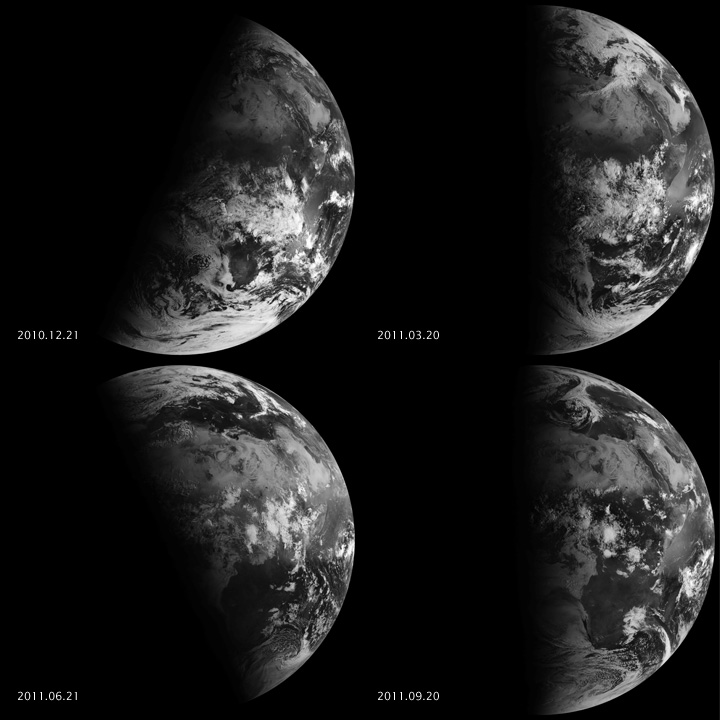Counting down to Australia’s shortest day of 2024
The Southern Hemisphere’s winter solstice will occur in 10 days, marking the shortest day and longest night of the year in Australia.
Earth’s tilted axis means our planet’s Northern and Southern Hemispheres are oriented more towards and away from the sun at different times throughout the year. This change in orientation relative to the sun causes our seasons and is why the sun appears higher in the sky during summer and lower during winter.

Image: The orientation of the solar terminator (line between day and night) on the Southern Hemisphere’s summer solstice (top left), winter solstice (bottom left), autumn equinox (top right) and spring equinox (bottom right) in 2010/2011. Source: NASA
The winter solstice refers to the moment when Earth’s Southern or Northern Hemispheres reaches their furthest tilt away from the sun. This happens once a year in each hemisphere, with the Northern Hemisphere’s winter solstice occurring in late December and the Southern Hemisphere’s winter solstice taking place in late June.
This year’s winter solstice in the Southern Hemisphere will occur at 6:51am AEST on Friday June 21, which is 10 days from now.
The date of the winter solstice will be Australia’s shortest day of the year based on daylight hours, while the surrounding nights will be Australia’s longest nights of the year based on time between sunset and sunrise.
If you live in Sydney, there will be roughly 9 hour and 54 minutes between sunrise and sunset on this year’s winter solstice. However, the daylength on the winter solstice will vary depending on latitude, with Darwin having close to 11 hours and 24 minutes between sunrise and sunset, while Hobart only gets 9 hours.
Following Friday’s winter solstice, days will start to become longer, and nights will get shorter across Australia. This trend will continue for the following six months until we reach the Southern Hemisphere’s summer solstice in late December, marking Australia’s longest day and shortest night of the year.